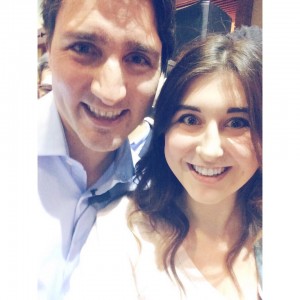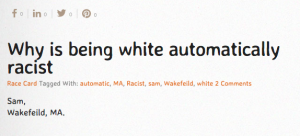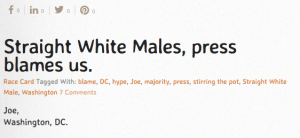Yesterday I attended and showcased a piece of work at the Coordinated Arts Program conference and, I must say, it was one of the most rewarding experiences of the year. The number of different directions taken by first year students at the beginning of their academic career path was inspiring.
I attended three panels that covered a multitude of topics, ranging from the representation of gender in the media, discussed by both Tara Rogic and Kelsey McDougall, to Islamophobia and Guantanamo Bay by Emma Hurlbert, to mass internet surveillance as seen in Joey Chan’s presentation. As I listened to these presentations, a pattern started to arise, one that I have been aware of throughout the semester but had not quite resonated: as students in the CAP, we are doing work that attempts to “better” the world.
Whether by calling out problematic trends in the media’s representation of women which sexualize and dehumanize women and risk naturalizing this view (Rogic) or cautioning the dangers of accepting internet surveillance which undermines the importance of privacy (Chan), my colleagues seemed to do research driven by a moral imperative. This could have been inspired by a CAP class itself, or, as Hurlbert stated, by personal connections to the subject matter.
One presentation in particular stood out to me. Samuel Basden and Tiara Driedger presented a Christian perspective of sexuality through close readings and interpretation of texts from the bible. One topic they addressed was the belief that sexuality is a physical expression of the need for a male and a female to be united as one. I found their presentation very interesting even though I was aware of the tension in the room brought about by an overtly religious perspective and presentation of moral beliefs. Specifically during the question period, several students challenged the presenters about the topics of gender (what if people don’t identify as one or the other?) and sexual orientation (what about homosexuality?) to which the presenters responded, in my opinion, very thoughtfully.
Driedger & Basden’s decision to present at the conference and the reaction of my peers makes me think of the discussions that should be able to happen within a university setting, ones that require mutual respect and open dialogue. It is also important to have controversial and difficult discussions. What is the alternative?
This article provides an example of the dangers of limiting academic conversations. It outlines potential threats the recently proposed Bill C-51 could pose to academic freedom, by targeting discussions or lessons that seem like a threat to the “security” of Canadians (by debating terrorism, for instance).
In an institution that is (hopefully) becoming more inclusive to different backgrounds, discussions become increasingly complex as individual values, including religious and political ones, can be difficult to reconcile with each other.
As we end our year in this multi-disciplinary program and continue to learn and produce knowledge on our way to “bettering” the world, it is important to realize that it will be a process complicated by the variety of perspectives each of us will encounter (what needs to get better? How?), but by no means an impossible one.



